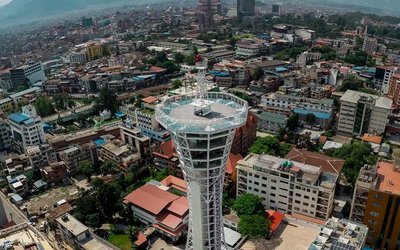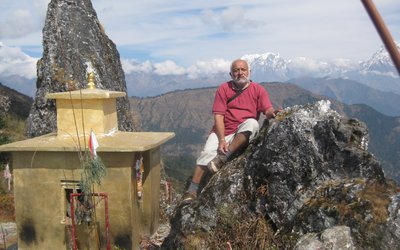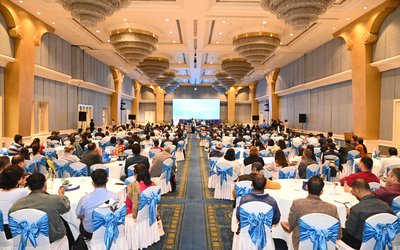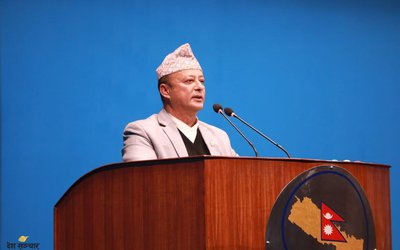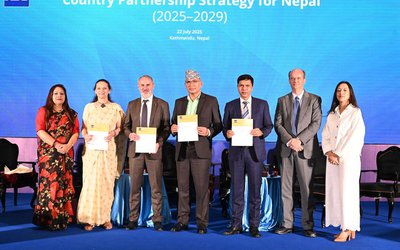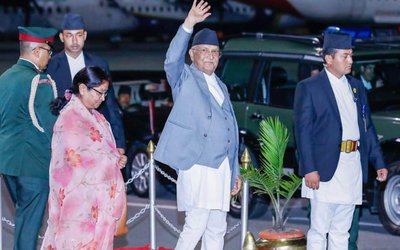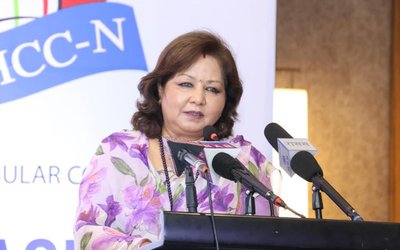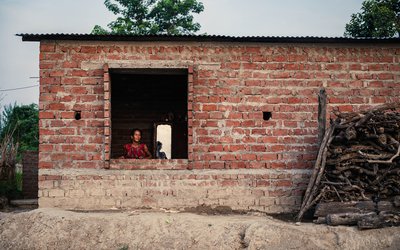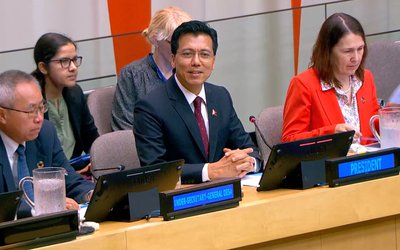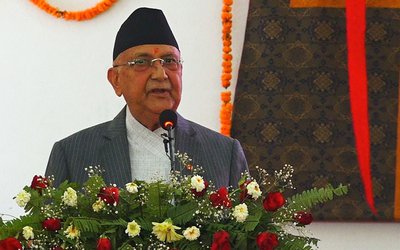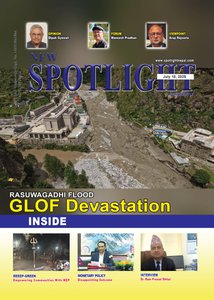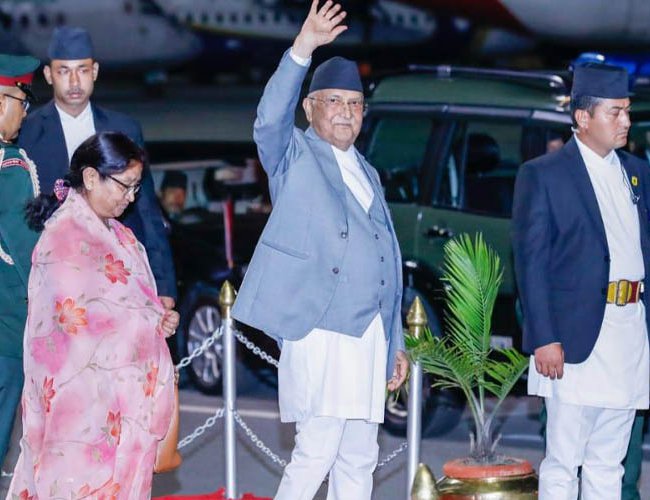
Prime Minister KP Sharma Oli of Nepal will lead the Nepali delegation to participate in the Third United Nations Conference on Landlocked Developing Countries to be held in the city of Avaza, Turkmenistan.
As announced, Prime Minister Oli is going to the conference to be held from Shrawan 20 to 23 at the formal invitation of President of Turkmenistan and UN Secretary-General, the Ministry of Foreign Affairs has stated.
Prime Minister Oli will also address the conference as the Chair of the Global Coordination Bureau for Least Developed Countries. Turkmenistan is hosting the Third United Nations Conference on Landlocked Developing Countries in Avaza from August 5-8, 2025.
The conference will focus on innovative solutions and partnerships to address the unique challenges faced by landlocked developing countries. It is expected to explore how landlocked developing countries can meaningfully benefit from globalization and accelerate their socio-economic growth.
The theme of the conference is “Achieving Progress through Partnerships”. The aim is to explore innovative solutions and build meaningful partnerships to expand the potential of landlocked developing countries.
The conference is also expected to address the challenges faced by landlocked developing countries due to geographical remoteness and lack of direct access to global markets.
The conference will feature five interactive thematic roundtables, one of which will be chaired by the Prime Minister of Nepal. A high-level special program will focus on integrating landlocked developing countries into the multilateral trading system.
A virtual side event at the 2025 ECOSOC Youth Forum will focus on the voices of youth from landlocked developing countries.
Nepal is a landlocked country, so Asian countries can help Nepal overcome its geo-economic challenges. Nepal's trade with India plays a significant role among South Asian countries. Because it shares an open border of about 1,000 kilometers with that country.
Therefore, any trade policy must be successful in addressing and integrating the Indian market. The geographical reality of Nepal is that Nepal is not only landlocked, but it is also so badly landlocked that it is unlikely to rely on any country other than India for transit.
Although Bangladesh has allowed the use of the Phulwari-Banglaband route and the use of Mongla port, the route has not been very beneficial in terms of infrastructure and cost, and even to enter Banglaband, it is necessary to go through about 43 km of Indian land from Kakarbhitta in the east to Banglaband.
For Nepal, the transit route with China is completely impractical for Nepal at the moment because India is the main transit country for all commercial traffic, both in terms of distance and in terms of economy. Although various transit protocols have been signed with China. Time will tell how practical and manageable they will be.
As a colony of the British, Indian traders made Nepal a transit country in their trade with Tibet. When the Kodari Highway was built in 1966, there was a lot of criticism about this road and it was considered a threat to India's security, but today, with the Sino-Indian relationship and the end of the Cold War, this situation has completely changed.
It is cheaper to import goods from Nepal than from mainland and central China. A transit point should not be seen as just providing a road.
If good transportation arrangements can be made, various economic opportunities can be obtained.
According to some experts, since the current relationship between India and China is based on economic diplomacy, Nepal can also use the opportunity of a transit or transit point only after a comprehensive study.
In this context, it is also noteworthy that there is a need for serious discussion or "discussion and debate" on the managerial, technical and legal aspects of transit.
Nepal, which has always been known as a landlocked country, has the opportunity to become a “linked” nation.
Nepal needs to improve its infrastructure. In business logistics, raw materials mean supplies, freight, equipment and electricity, and also include the indirect costs of such raw materials and logistics services, including packaging, packaging, and pallets.
Poor logistics planning gradually increases costs, and unnecessary issues can arise from the implementation of ineffective logistics software, so it is essential to focus on and invest in effective logistics management.
These problems are mostly caused by poor decisions related to outsourcing, such as choosing the wrong vendor or performing delivery tasks without sufficient resources.
In terms of the suggested measures, the role of Nepal Transit and Warehousing Company (NTWC) and Nepal Intermodal Development Board (NITDB) should be clarified based on their roles and scope of work.
There is an urgent need to initiate capacity building programs for the relevant stakeholders. Other suggestions include: Management of infrastructure under the Nepal private sector, ICDs/ICPs, inclusion of shipping in the trade and transit agreements, Nepal should be alert and cautious while bringing foreign investment in logistics is damaging our economy, and Nepal should be promoted through the means of transport.
Nepal’s trade potential is hampered by a wide range of issues related to logistics management during cargo movement from the port in Kolkata to the country’s entry points at the Nepal-India border. This has resulted in higher transit costs for transporting goods in Nepal.
Despite progress in transit management, Indian traders have in the past and some are still creating many obstacles while transporting goods from Indian soil. They are: increasing traffic at Kolkata Port, unavailability of adequate number of rail racks, overcrowding at Birgunj Inland Container Depot, lack of full operationalization of Birgunj Integrated Check Post and excessive documentation process have emerged as other major problems.
The rapid pace in construction and implementation of Integrated Check Post will also be a problem. The meeting of Indian and Nepali officials to review the decade-and-a-half old Rail Services Agreement (RAS) has already taken some steps forward. Nepal should implement Electronic Cargo Tracking System (ECTS), Nepal should make maximum use of Vizag Port and demand and use Dhamra Port for future transit traffic. For Nepal, the key issues that need to be addressed for effective operation of Vizag Port are: There was no transparency and tracking/tracing system for containers moving from Vizag Port to ICD Birgunj.
Nepali traders should rely on CAA/Shipping Line for real-time information which is not available in the past.
The meeting of the Nepal-India Inter-Governmental Committee (IGC) on Trade, Transit and Countering Unauthorized Trade was held in Kathmandu recent past . It is good and cordial for both the countries that the meeting of the Nepal-India Inter-Governmental Committee (IGC) on Trade, Transit and Controlling Unauthorized Trade was held in Kathmandu on 10-11 January 2025 with various agreements.
At the request of the Nepali side, the Indian side agreed that the maximum permissible weight of two-axle vehicles and 28 tonnes for three-axle vehicles as per the prevailing regulations of the Ministry of Road Transport and Highways will also be applicable to Nepali vehicles. This is expected to be a milestone in the import and export of cargo via Kakadbhitta (Nepal) - Bangla (Bangladesh) - Phulbari (India) route via Banglabandh.
This meeting of the IGC, a bilateral mechanism for strengthening trade and investment relations, seems to have comprehensively reviewed the overall aspects of bilateral trade and economic relations. Both sides reviewed issues related to mutual market access, IPR and tariffs.
It is noteworthy that the agenda also included the review of the Transit Treaty and Trade Treaty, proposals for amendments to the existing agreement, harmonization of standards and coordinated development of trade infrastructure, including electrification of the Raxaul-Birgunj railway.
Weak productive capacity, inadequate infrastructure, low foreign direct investment, lack of effective institutional mechanisms to address the emerging problems, etc. are prominent. Inefficient trade facilitation infrastructure with complex rules and regulations, lack of coordination between trade and transport agencies, inconsistent reporting of trade data. The Trade and Transit Treaty should also include transportation, despite progress in trade, Nepali traders are still facing many obstacles while transporting goods from Indian soil.
In the past, the increasing traffic at Kolkata Port, lack of adequate number of rail rakes, congestion at Birgunj Inland Container Depot, full operation of Birgunj Integrated Check Post and excessive documentation process were the major ones. There is a need to implement a single window system and online document verification to reduce the number of days in cargo movement.
In addition to accelerating the implementation of Integrated Check Post (ICP), implementation of an electronic cargo tracking system, Nepal should optimally utilize Visakhapatnam Port and also consider Dhamra Port for future transit traffic. Nepal is facing a large trade deficit with India, which is a matter of serious concern for Nepal’s economic and sustainable development. Therefore, Nepal expects the support of the Government of India in this regard. Both sides have agreed to form a joint working group to discuss the issue of online clearance between Nepal and the South Asian Free Trade Area (SAFTA).
It seems that the review of the Nepal-India Trade Agreement 2009, some agreements under the Nepal-India Transit Agreement 2023, and discussions on the Unauthorized Trade Agreement 2009 are expected to follow suit.
It seems that the expectation of discussing the review of the Nepal-India Trade Agreement 2009, some agreements under the Nepal-India Transit Agreement 2023, and the Unauthorized Trade Agreement 2009 is in line with expectations. The IGC also discussed the review of the Transit Agreement and Trade Agreement, proposed amendments to the existing agreement, harmonization of standards, and coordinated development of trade infrastructure, including electrification, so it can be said that there is hope for new enthusiasm in the trade and transit sector.
TO sum up , along with these the LLDC countries issues will be taken care of after discussion and debate.
- Susan's “U-Turn” From Atheism To Spirituality And Superstition: Some Considerations
- Jun 29, 2025
- Former Ambassador To People’s Republic Of China Acharya's 'Diplomatic Diary': A Collection Of "Autobiography " Including Diplomacy
- Jun 17, 2025
- Banker And Businessman Being The Same Person: How Practical, How Impractical
- Jun 01, 2025
- 2082/83 Policy And Program: Presentation New, Short But Not Exciting
- May 07, 2025
- Nepal's Capital Market: Some Analysis
- May 02, 2025


